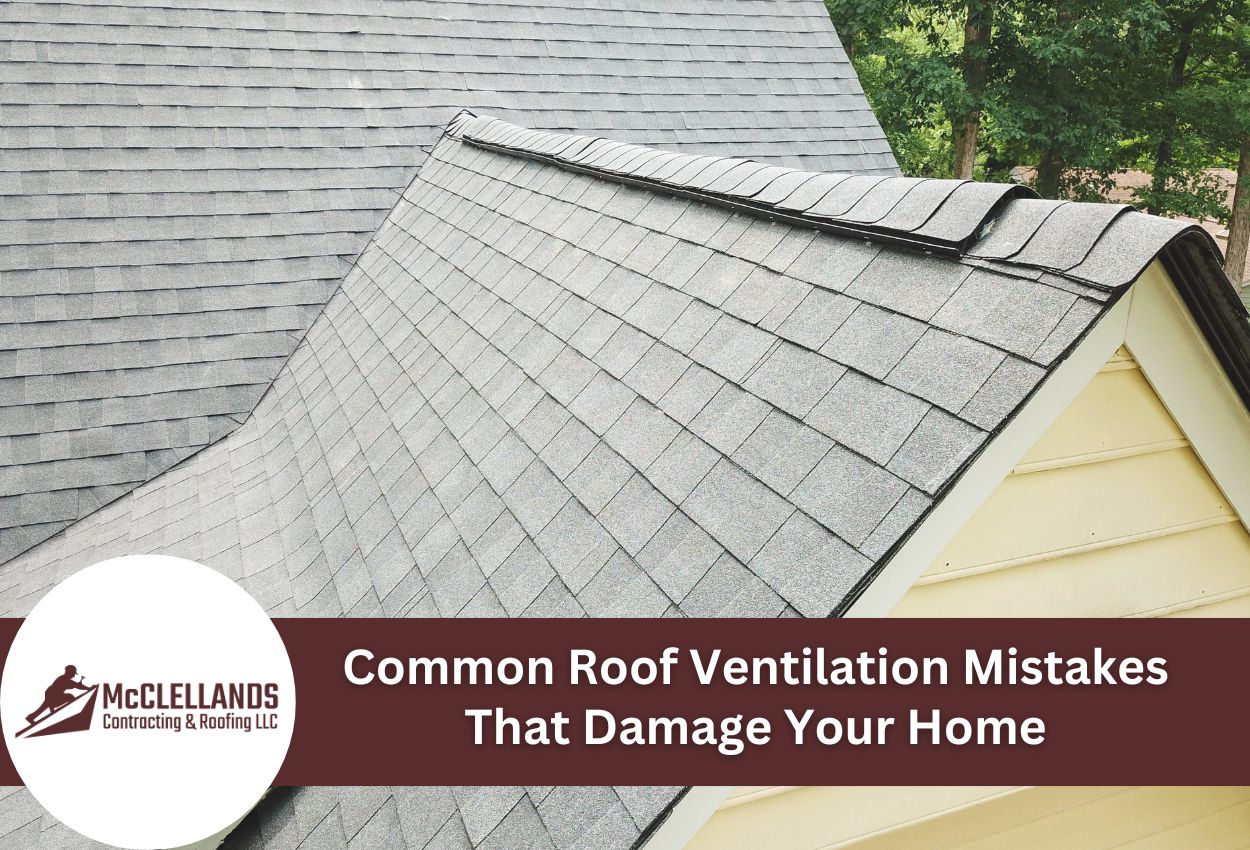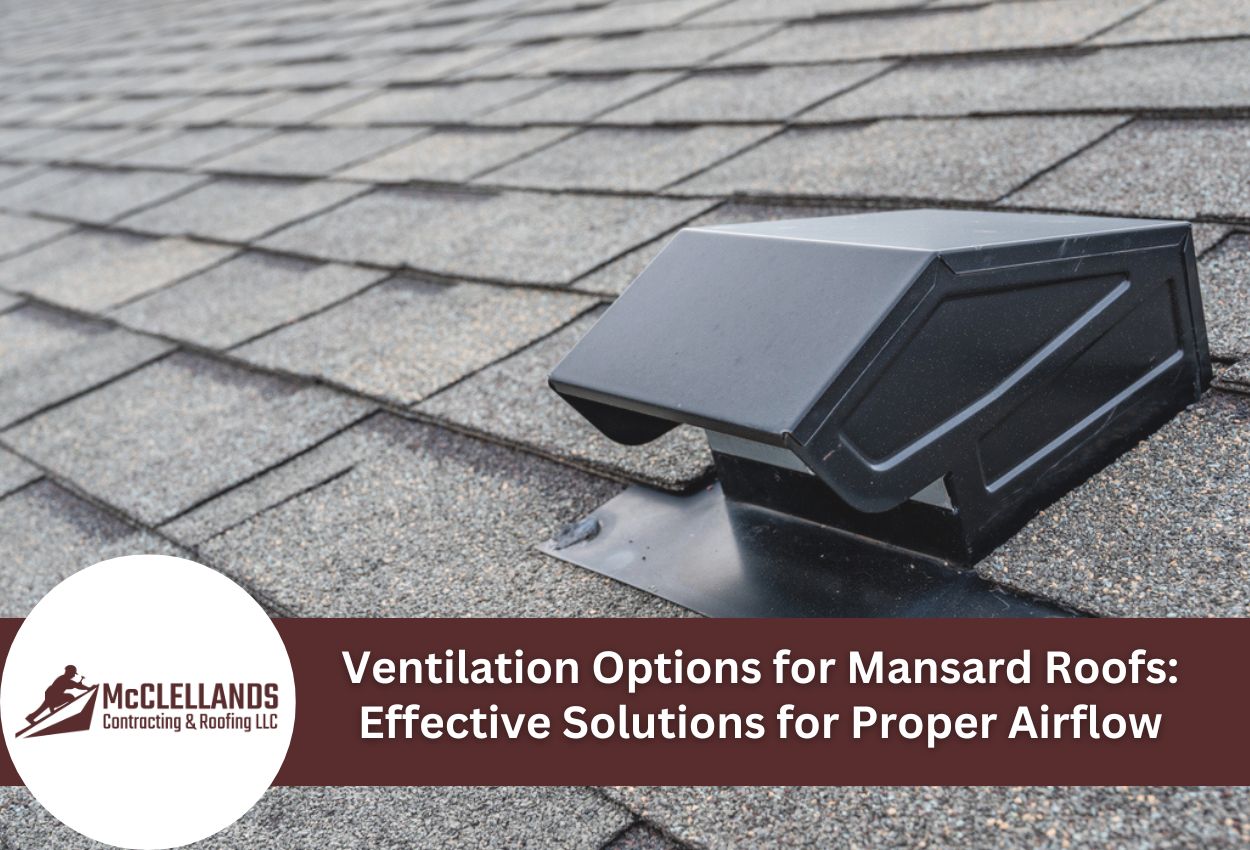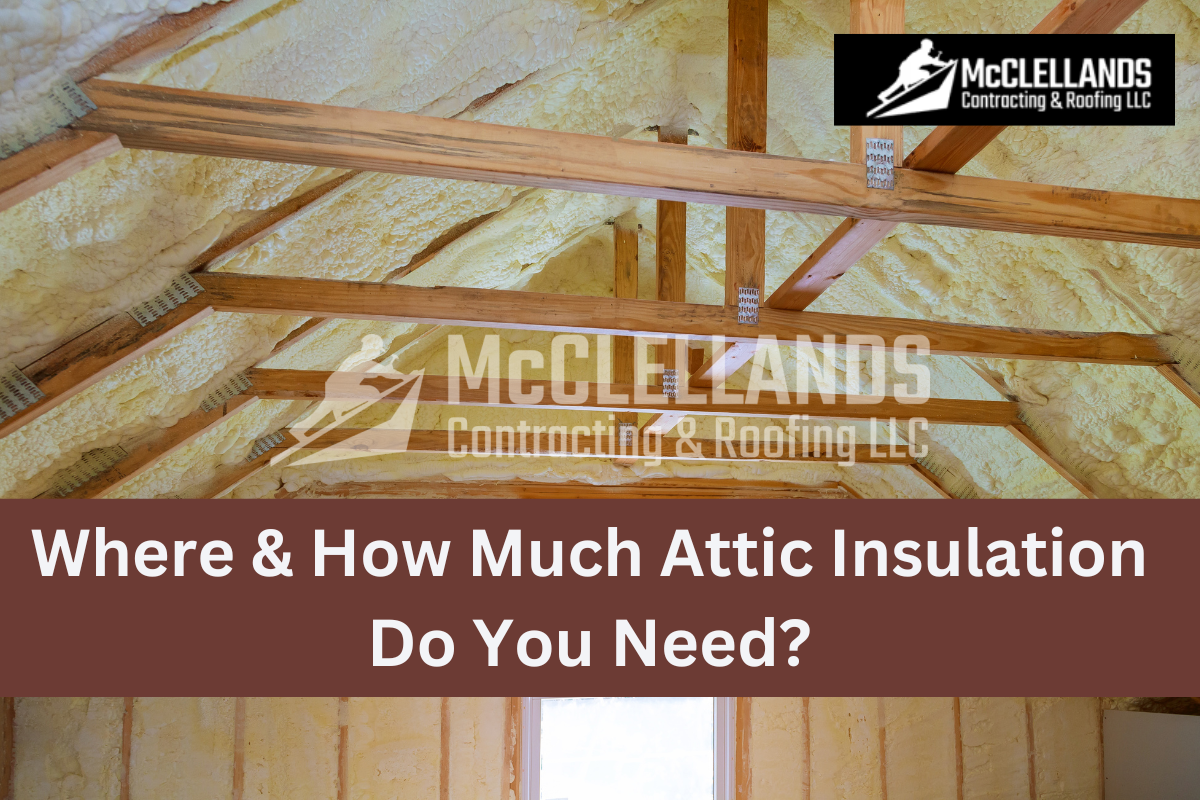Having the right roof ventilation plays a crucial role in maintaining the structural integrity of Pittsburgh homes, especially given the region's annual weather. From heavy snowfall in winter to humid summers, your roof ventilation system works year-round to protect your home from moisture damage, excessive heat, and premature deterioration. Unfortunately, many Pittsburgh homeowners overlook common roof ventilation mistakes that silently damage their properties and lead to expensive repairs.
Without the right type of ventilation, more than just the temperature in your attic is affected; it impacts energy efficiency, roof lifespan, and indoor air quality. Many homeowners remain unaware of improper roof vent installation issues until significant problems emerge, such as mold growth, wood rot, or ice dam formation. These roof ventilation problems often go undetected until they require extensive repairs or complete roof system replacement.
Understanding the signs of poor roof ventilation can help homeowners identify potential issues before they get worse. From unusual attic temperatures to visible moisture damage, these warning signals indicate that your ventilation system requires attention. By recognizing and addressing attic ventilation system errors early, Pittsburgh homeowners can avoid serious structural damage and extend their roof's service life.
Insufficient Ventilation: The Silent Destroyer
Inadequate ventilation ratios create a dangerous imbalance within the attic that traps moisture and heat. This trapped moisture doesn't simply disappear either; it gradually seeps into your roofing materials, causing wood rot, warped decking, and compromised structural integrity. Most Pittsburgh homeowners are shocked to discover that poor ventilation can slash their roof's lifespan by up to 50%.
The Pittsburgh climate creates unique ventilation challenges throughout the year. During winter, improper roof vent installation allows warm, moist air to condense in cold attics, potentially causing ice dams along your roofline. Summer brings different problems, like temperatures that can reach as high as 150 degrees Fahrenheit, if there’s not enough airflow coming through vents. This extreme heat accelerates shingle deterioration and can void manufacturer warranties.
The most overlooked roof ventilation problems involve improper intake-to-exhaust ratios. Your attic requires a balanced airflow, with enough intake vents (usually in soffits) to match exhaust vents (at the ridge). Without this balance, negative pressure develops, preventing proper air circulation. For Pittsburgh homes with steep roof pitches or complex architectural designs, this balance becomes even more critical to prevent the signs of poor roof ventilation from developing into major structural issues.
How Improper Vent Placement Compromises Your Roofing System
Even with the right number of vents, incorrect placement can cause your entire ventilation system to be ineffective. One of the most common roof ventilation mistakes Pittsburgh roofers encounter is intake and exhaust vents that are improperly positioned. When vents are placed too close together, they create "short-circuiting, which causes fresh air to enter and exit without properly circulating through the attic space, leaving stagnant air pockets that collect moisture and heat.
If the roof has a complex design, this is even more problematic. Many homeowners have exhaust vents installed on only one side of the roof, creating uneven airflow patterns that leave portions of the attic inadequately ventilated. This error leads to localized moisture buildup and insulation deterioration in neglected areas.
Another critical mistake is mixing different ventilation types without understanding their interaction. Installing ridge vents alongside gable vents often creates competing airflow patterns that cancel each other out. Pittsburgh roofing professionals frequently see homes where new ventilation was added without removing older systems, creating these counterproductive combinations.
Mixing Different Ventilation Types: A Recipe for Disaster
One of the most overlooked roof ventilation problems we see across Pittsburgh homes is the improper mixing of different vent types. Some homeowners believe that more is better when it comes to roof ventilation, leading them to install ridge vents alongside box vents or power vents. This approach actually creates a ventilation short-circuit that dramatically reduces the system’s effectiveness. When multiple vent types compete for airflow, they often pull air from the path of least resistance rather than drawing it properly through the entire attic space.
For example, when ridge vents (which create consistent passive exhaust along the roof peak) are combined with power vents (which forcefully pull air), the power vent typically draws air directly from the ridge vent rather than from soffit intakes. This short-circuiting leaves large portions of your attic without proper air movement, creating hot spots where moisture accumulates and damages your roofing structure. We've seen countless Pittsburgh homes suffering from premature shingle failure and mold growth due to these incompatible ventilation combinations.
Creating a cohesive ventilation strategy requires understanding the way your roof is designed. Homes with simple gable roofs generally benefit from a balanced soffit-to-ridge ventilation system, while hip roofs might require strategic placement of intake and exhaust vents to ensure complete coverage. A professional roof inspection can identify the optimal ventilation solution for your home's unique architecture and prevent the attic ventilation system errors that lead to expensive repairs.
Recognizing Warning Signs of Ventilation Failure
Identifying ventilation problems early can save Pittsburgh homeowners thousands in potential damage. The first visual indicators often appear in your attic, where moisture stains on the underside of roof sheathing signal trapped humidity. Check for dark or discolored wood, especially near exhaust vents or in corners where airflow might be restricted. Water droplets or frost on roof nails during cold weather is a definitive sign that warm, moist air is condensing in your attic space.
Your ceiling may also reveal clues about ventilation failure. Look for paint bubbling, peeling, or water stains, particularly in rooms on the upper floor. These signs suggest moisture is migrating from an improperly ventilated attic into your living space. Black spots on attic insulation indicate mold growth, which is another consequence of poor airflow, as it traps humidity against cold surfaces.
If upper floors become excessively hot during the summer despite your air conditioning running constantly, heat may be radiating down from an overheated attic. In winter, ice dam formation along your eaves is a classic symptom of heat escaping through your attic and melting snow, which then refreezes along the colder roof edge. Pittsburgh's freeze-thaw cycles make homes particularly vulnerable to this ventilation-related problem, which can force water under shingles and into your home's interior walls. Acting quickly when these warning signs appear can prevent extensive structural damage.
Blocked Soffit Vents: The Overlooked Culprit
Among the most common roof ventilation mistakes Pittsburgh homeowners make is ignoring the condition of their soffit vents. These critical intake vents, located under the roof's eaves, are the starting point for proper attic airflow. When blocked, they effectively shut down your entire ventilation system, regardless of how many exhaust vents you have installed. This is typically caused by insulation that is improperly installed, causing it to crowd or completely cover the soffit openings, preventing fresh air from entering the attic space.
Over time, debris makes this issue worse. Leaves, dust, pollen, and even insect nests gradually accumulate in soffit vent openings, reducing their effectiveness. In older Pittsburgh homes, we frequently discover soffits that haven't been cleaned in decades, with airflow reduced by over 80%. This blockage forces your roofing system to draw replacement air from wherever possible, often pulling conditioned air from your living space through small cracks and openings, increasing your energy costs substantially.
Fortunately, checking your soffit vents is a simple DIY task. On a cool day, enter your attic with a flashlight and look toward the eaves. You should see daylight coming through soffit vents and feel air movement. If light is blocked or airflow seems restricted, examine your soffits from the outside. Clear visible debris and ensure insulation is pulled back from vents using proper baffles. For completely obstructed vents, professional cleaning or vent replacement may be necessary to restore proper airflow and prevent the serious roof ventilation problems that blocked soffits inevitably cause.
Professional Solutions for Upgrading Your Roof Ventilation System
When basic ventilation fixes aren't enough, it's time to consider professional roof ventilation upgrades that address Pittsburgh's unique climate challenges. Modern ventilation technology has evolved significantly, offering solutions specifically designed for our region's harsh winters and humid summers. High-performance ridge vent systems with external baffles create a stronger draw of air regardless of wind direction, while advanced soffit systems provide consistent intake airflow even when partially blocked by snow.
Smart attic ventilation systems represent the cutting edge for Pittsburgh homes, as they use temperature and humidity sensors to activate supplemental fans only when natural ventilation isn't sufficient. These hybrid systems maintain optimal attic conditions year-round while minimizing energy consumption. For homes with complex architectural features, custom-designed ventilation plans may incorporate multiple compatible vent types strategically placed to ensure complete air exchange throughout the entire attic space.
Selecting the right contractor for your ventilation upgrade is crucial. Look for established Pittsburgh roofing professionals with specific ventilation certification and experience with Western Pennsylvania's climate considerations. Qualified contractors will conduct thorough attic inspections, measure your exact ventilation requirements based on attic square footage, and explain how their proposed solution addresses any existing roof ventilation problems. They should also provide a clear explanation of how their ventilation strategy will protect your home through all four seasons, not just address current issues.
Resolve Your Roof Ventilation Issues with McClellands Contracting and Roofing, LLC
Don't let common roof ventilation mistakes compromise the integrity and comfort of your Pittsburgh home. Addressing improper ventilation can save you from expensive future repairs and improve your overall home environment. Whether it's the silent destruction caused by insufficient ventilation, improper vent placement, or the chaos of mixed ventilation types, McClellands Contracting and Roofing, LLC has the expertise to diagnose and fix these critical issues effectively.
Don't wait for the damage to escalate. Call us today at (412) 353-5660 to schedule a comprehensive inspection and enjoy a safer, more comfortable home.




